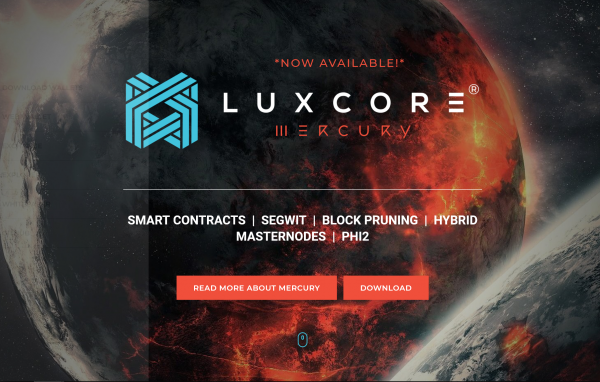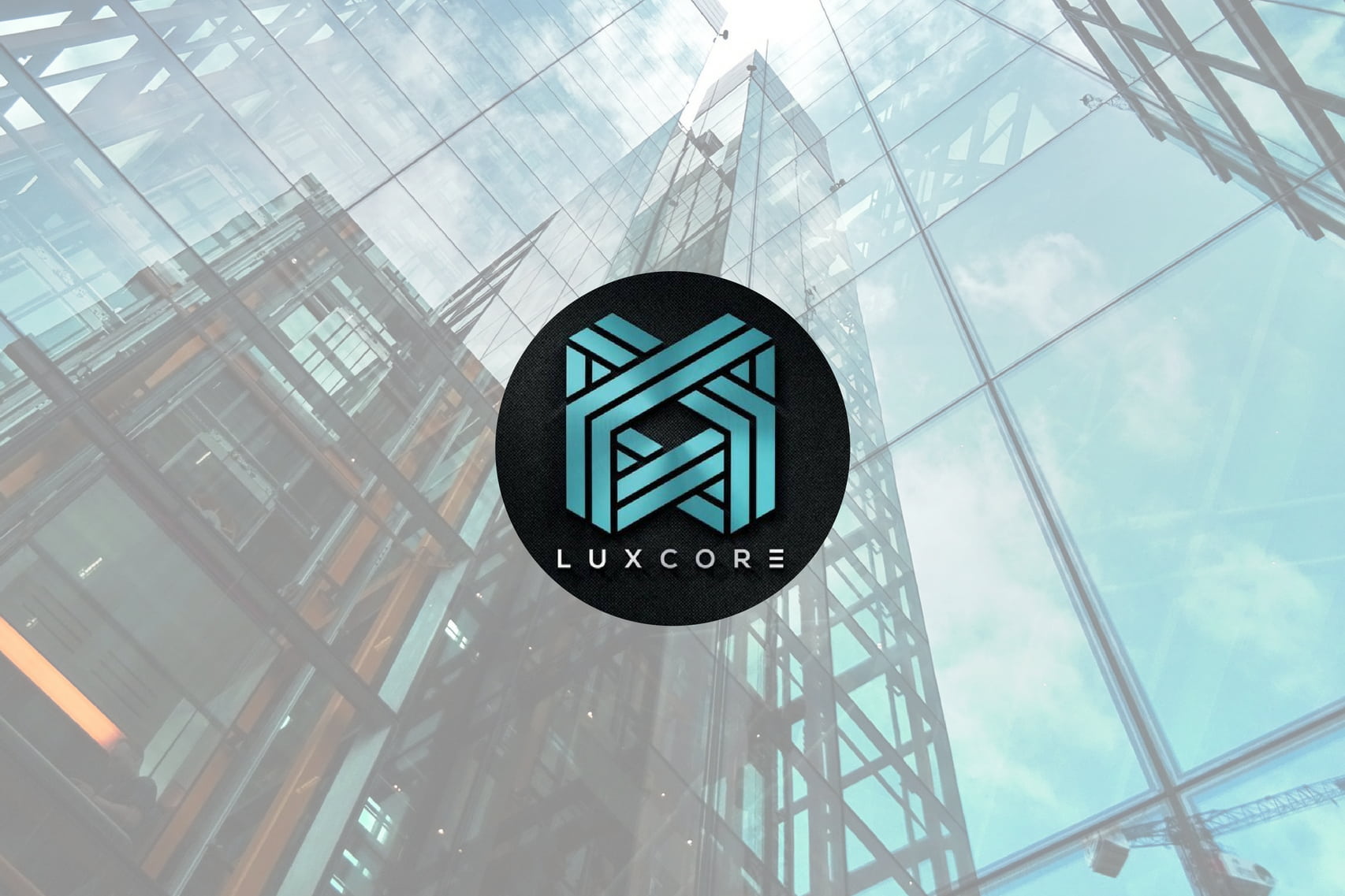Proving to be a literal “Lux in Tenebris” (“light in darkness”) in our current blockchain ecosystem where oversaturation and overpromising have become the norm, Luxcore is ushering in a new era of ingenuity and application via a highly customizable and industry-agnostic blockchain solution platform for enterprise, institutions, and end-users.
Simply put, the Luxcore ecosystem is easing business integration of blue blood, blockchain-ready features and products, and simplifying overwhelming and costly blockchain barriers to entry — all while bridging the gap between average and enterprise users through case-specific architecture and tools.
Specifically, Luxcore supports:
- High Levels of Scalability: Infinite permissioned blockchains and private networks through LUXGate – a cross-chain “unifying bond” for differing ecosystems – and Parallel Masternodes.
- Enterprise-Ready Architecture and Cherry-Picked Solutions: Championing of the most significant blockchain attributes under one ecosystem, while enabling enterprises and institutions to access and run — on location or on cloud — domain-specific dapps and other customizable applications.
- Security and Privacy: Classic blockchain coin mixing and cloaking, along with 2 differing and strengthening layers of security algorithms for data and functional transactions.
And, having pushed out the 25th highest amount of commits in all of crypto over the last 3 months and recently released Luxcore Mercury v5.0 — their most ambitious update to date, due to a hard fork — Luxcore is gearing up for an aggressive march towards solidifying its place at the forefront of blockchain enterprise adoption.
Before diving into our 5 core reasons why you should keep an eye on Luxcore and how its open-source, decentralized blockchain solutions platform is bringing unprecedented value to enterprise blockchain adoption, check out this IBM article breaking down 5 tangible blockchain benefits on real-world industries (transparency, security, traceability, efficiency, reduced costs).
Now, let’s get to it. Below are 5 reasons why Luxcore is worth keeping an eye on in the 2nd half of 2018.
1. LUXGate: The Gorilla Glue of Blockchain Interoperability
Having already been completed, tested, and verified (except for licensing approval), and touted by the Luxcore team as “nothing short of a technological marvel in the blockchain space,” LUXGate — Luxcore’s interoperability protocol — is bridging the gap between an otherwise fragmented and incompatible blockchain ecosystem by enabling the seamless communication and operability between validated blockchains.
Working in tandem with their “Parallel Masternodes,” private networks which act as government and business-specific secure information gateways, LUXGate is facilitating engagement between platforms and blockchains — e.g. allowing the Ethereum blockchain to interact with Zcash or Monero, and vice versa.
With ever-growing blockchain specializations (ranging from medical records, to financial transactions, to land registry instruments, to energy markets), a degree of standardization is in dire need for the ease of mass scale smart contract and DApp deployment.
Thanks to execution and implementation of system-agnostic LUXGate, the decentralized Internet stands to recognize and realize never-before-seen value, empowering institutions, governments, and enterprise to not only:
- Utilize blockchain technology, but
- Strengthen security and functionality standards through combined algorithmic layers.
Think of LUXGate as the glue that connects and holds differing blockchain ecosystems together. Wait a minute… scratch that. LUXGate is the “Gorilla Glue” strengthening and connecting varying blockchain layers and platforms to centralized functions (e.g. banking, government, institutional) for the purpose of a crystalline and fluid transactional world.
2. First and Only PoS-Enabled Web Wallet
Employing a static reward system (as opposed to dynamic), where individuals staking LUX (the native token of the Luxcore platform) are rewarded regardless of total holdings, Luxcore has rolled out the first and only free PoS-enabled web wallet to equalize the staking playing field for those looking to capture their slice of the pie without expending:
- Exorbitant energy, or
- Time and learning curve costs.
Luxcore’s one-of-a-kind staking web wallet (80% staker/20% masternode) ultimately incentivizes network actors to retain full copies of the blockchain while ensuring network decentralization, while rewarding users more frequently the more coins they hold (0.8 LUX per block).
In fact, LUX stakers don’t even need to leave their computer open in order to generate rewards. And, LUXCoin PoS maturity is achieved in just 36 hours, meaning users are able to start right away.
Most web wallets in the present crypto-sphere support just a few core utility or aesthetic features, such as an easy-to-use interface, high-grade security features, or a sleek look. However, not a single web wallet out there combines all essential protective and functional elements into one wallet.
Specifically, Luxcore’s web wallet authorizes:
- High degree of decentralization: The LUX wallet builds upon traditional web wallet uni-node implementation by leveraging Amazon Web Services (AWS) and is hosted across numerous parallel nodes, eliminating a single hardware point of failure.
- User private key retention: LUX users retain complete control of their private keys and are able to import and export keys directly (instead of sending funds wallet-to-wallet), enabling skirting of network fees and the permanent deletion of data from servers.
- Monetizable and infinite scalability: Luxcore CEO Brian Oliver noted that the wallet is geared to be the first real product sold to other projects, and thanks to its multi-node infrastructure is able to scale to accommodate projects with large user bases. Furthermore, the web wallet is available for purchase with LUXCoin, recycling value back into the Luxcore ecosystem.
For users seeking an easy-to-use, high-yield, secure web wallet, Luxcore’s web wallet offers one of the most technologically sophisticated, secure, and comprehensive in all of blockchain.
3. Block Pruning: A Full LUX Node on a USB
Furthering the ease-of-use of their web wallet, Luxcore is reducing the “ever-increasing storage demand” placed on users through block pruning — where unnecessary data is cleansed and wiped after transactions are fully spent (look no further than Satoshi’s vision for Bitcoin for pruning at its purest).
With Luxcore’s block size already fourfold greater than Bitcoin’s (LUX = 4MB) and storage space growing at an unsustainable amount for well-oiled transactional output, Luxcore is curbing problems before they manifest.
Cue block pruning, empowering LUX users to:
- Set the overall scope of how many MB they want to allocate towards hosting the Luxcore blockchain
- Automatically expunge the oldest block data
- Host the entire LUX node on just a single USB stick
For example, when applied to enterprise and institutional adoption, block pruning stands to reduce computational effort towards valuing and tracking customers, identifying corresponding business interests, and monitoring subsequent interactions and referrals – ultimately allowing for irreproachable tracking of consumer and target lines-of-business.
Let the dollar circulate and the blockchain prune. The days of worrying about running out of space are long gone.
4. Parallel Masternodes and Enterprise Security
Operating 24/7 and gifting an additional layer of stability along with 2 extra levels of functionality to the LUX network, LUX Masternodes are at the heart of Luxcore’s security and rewards systems. Requiring a minimum of 16,120 LUX in one’s wallet to achieve LUX Masternode status, owners earn rewards by not only supporting the network, but providing additional services in return for 20% of the Proof-of-Stake block.
Such additional services include:
- The enablement of LUXSend — a privacy tool utilizing coin-mixing to ensure trustless obfuscation of coin origin, user wallet details and information, and addresses
- Increased transaction speeds
However, that’s not where LUX Masternodes end.
Extending the scope of masternodes even further, Luxcore is rolling out their “Parallel Masternodes” (PMNs) for vetted and verified businesses and institutions. Built on i2pd Technology (an anonymous network layer) and the SAM Protocol (enhanced cryptography performance), LUX’s PMNs are geared towards enterprise-consumer settlement, allowing such entities to act as secure information middlemen and gateways across the blockchain – encrypted with auto-changed IP addresses and fitted to meet institutional security prerequisites.
So, what’s this mean in the greater picture of enterprise and institutional blockchain adoption?
As noted above, combined with the interoperability afforded by LUXGate, Luxcore’s PMNs work cross-algorithm to overhaul traditional banking transactional systems – where businesses and institutions are now able to enjoy not 1, but 2 layers of firewall security (each with varying security strength) across their own private network (while still enjoying benefits of the main public chain).
5. Solving Scalability and Malleability Via SegWit

With Luxcore’s Mercury v.5.1.0 ushering in a new era of reform and ingenuity to the blockchain platform, LUX is hitting the ground running with the implementation of Segregated Witness (SegWit), a size-alleviating security and malleability feature splitting transaction data into 2 segments through the removal of the witness data (i.e. the unlocking signature) from the Merkle tree record by attaching it to a separate blockchain structure.
Specifically, Luxcore’s implementation of SegWit solves 2 core issues plaguing the blockchain (and most other blockchains for that matter):
- Scalability: the capability of the blockchain to handle increased transactions at any given time.
- Transaction malleability: a property of blockchain and cryptographic algorithms where transaction IDs and ciphertext may be transformed, manipulated, or invalidated.
SegWit is taking LUX from the Minor Leagues to Majors, preparing the platform for the both increased transactions-per-second (tps) – enabling greater enterprise and user adoption – and guarding against double-spending and blockchain fraud – important for enterprise and user trust.
Curious about some of the other benefits from implementing SegWit? Check out this article on Bitcoincore.org breaking down Segregated Witness even further and explaining all the other important benefits for the Bitcoin blockchain.
Final Thoughts
With a seeming unofficial growth moratorium placed on the 2018 crypto-sphere, Luxcore is making tangible and realizable strides towards easing mass adoption for institutions and enterprises seeking blockchain-ready solutions to age-old security, privacy, and efficiency problems.
And, having broached the top 25 in overall project commits over the last 3 months, it’s clear Luxcore is focused on maximizing efficacy and product — rather than overpromise and reliance on past merit — to ultimately craft and solidify their stronghold (and become a Lux in Tenebris) at the forefront of blockchain solutions in our present-day “Wild, Wild West” blockchain ecosystem.
If you’d like to read up further on Luxcore and their recent Mercury release, you should check out their website and whitepaper, both of which lay the core foundation for understanding their overhaul of blockchain solutions for not only enterprise and institutions, but government as well.
And for those curious about Luxcore’s price, at the time of writing, it is listed at US$2.39 or 34,283 Satoshis.
Furthermore, if you’re curious about the rest of their 2018 ahead and developer updates, you can find more information on their roadmap, Medium, Twitter, Reddit, and GitHub.

